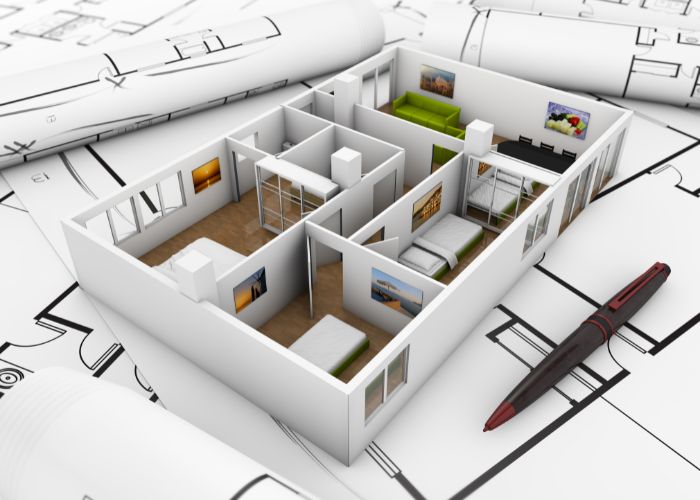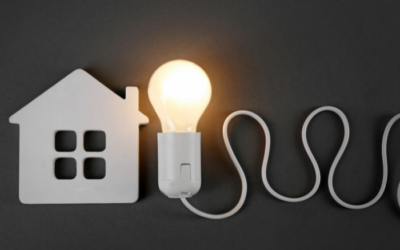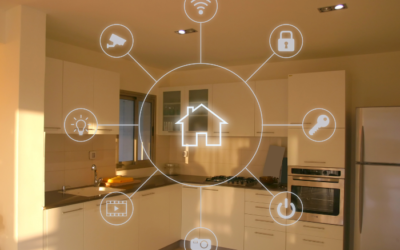How to Properly Plan the Renovation Process, Create Detailed Plans, and Set Priorities
Renovation can be challenging and complex if not planned properly. The design phase is based on the idea that any action, no matter how small, must have a clear objective and guiding principles. These principles direct the entire renovation process—from material selection to final finishing work. Accurate planning of structural and functional changes helps avoid unnecessary expenses, technical issues, and time loss.
Where planning is clear, the process becomes more comfortable and predictable. Renovating a home or business space involves more than design decisions—it also requires functionality improvements and a long-term vision for the final results.
Design Phase: Developing and Exploring Initial Ideas
Before beginning any renovation work, it’s essential to conduct a thorough study and gather necessary information. First, you must understand the intended use of the space and identify the required stylistic or functional changes. This involves finding sources of inspiration—from the internet, architectural books, and real-life examples.
How to Generate Ideas:
- Evaluate the functionality of the space—what problems need solving?
- Create idea folders with sketches, photos, and references.
- Clarify your priorities—do you need to increase space, or improve current functionality?
Useful tools include specialized software offering 3D modeling to visualize possible outcomes before starting the renovation process.
Budget Planning and Resource Allocation
Proper budgeting accounts for 50% of a successful renovation. You must prepare a detailed budget in advance that includes all materials, labor, and potential unforeseen expenses.
How to Define the Budget:
- Clearly determine how much you’re willing to spend on the renovation.
- Create a comprehensive list including materials, labor, and technical equipment.
- Pay close attention to preliminary estimates and volume sheets.
It’s also crucial to include a reserve fund in the budget—for unforeseen expenses, plan for at least 10–15% extra.
Setting Priorities
Defining the right priorities helps assess and organize the most critical tasks. Goals should be categorized by importance, serving as the basis for key decisions.
Priority Criteria:
- External factors—such as functionality and safety.
- Interior changes—including aesthetic improvements.
It’s important to distinguish whether architectural changes take precedence over interior design updates. Proper assessment of these elements is the first step toward success.
Creating Detailed Plans
This is one of the most important stages, as detailed planning provides a clear, step-by-step view of the entire process.
It includes:
- Step-by-step planning
- Drawing and modeling the space
- Defining clear standards and expectations
At this stage, you can use software tools like AutoCAD, ArchiCAD, or similar platforms for precise drafting and visualization.
Preliminary Project Review and Change Management
During renovations, unexpected changes often arise that can impact the project. These must be properly managed, as they can affect both budget and timelines.
Change Management Strategies:
- Consult with professionals for expert advice.
- Update project plans according to the latest modifications.
It’s always important to review plans regularly, considering potential problems and their solutions.
Work Scheduling
Proper scheduling and planning methods ensure timely project completion. Tasks must be organized so that all phases are completed on time and without delays.
- Create a timeline for each task, marking start and end dates.
- Coordinate with experts and workers to clearly define when each phase will be carried out.
Selecting Stores and Materials
Choosing the right suppliers and materials is essential for ensuring quality and staying within budget. This phase focuses on the following key points:
Store Selection Criteria:
- Reputation and trust—only choose established and experienced suppliers.
- Price-to-quality ratio—every product and service should be worth its cost.
- Responsibility and deadlines—suppliers must adhere to clearly defined timelines and contracts.
Material Selection Criteria:
- Durability and quality—the better the quality, the longer the materials will last.
- Environmental standards—if eco-friendly construction is a priority, choose sustainable materials.
- Functionality—some materials may offer better practical value, combining quality and efficiency.
Steps to Organize the Process:
- Gather offers from various stores and suppliers.
- Analyze each option in detail, based on your budget.
For example, when choosing wall paint or flooring, compare products from multiple brands and request quotes to find the best deal.
Risk Management and Budget Control
Managing risks and controlling the budget is vital, especially in large renovation projects. Even the most detailed plan can face unforeseen events that need adjustments.
Risk Management Methods:
- Identify possible risks early and plan for solutions.
- Reserve at least 10–15% of the budget for unexpected costs.
- Monitor timing closely—anticipate potential delays and maintain constant communication with contractors to avoid project setbacks.
Effective Budget Control:
- Regular progress reports from the work team to track expenses.
- On-site inspections to ensure timely completion and adherence to standards.
For example, if your project includes technical tasks like upgrading electrical or plumbing systems, it’s best to work with experienced professionals to avoid costly mistakes.
Reporting and Supervision
Providing regular reports and supervision throughout the renovation process is essential. Without consistency in this area, it’s hard to track progress and solve issues quickly.
Importance of Reporting:
- Assess progress weekly or at other intervals.
- Check if work is following the original timeline.
Monitoring System:
- Use reporting tools or regular meetings with the team to discuss current progress.
- Establish a dedicated management team responsible for monitoring.
For instance, if you are working on a large-scale project, it is important to create a supervisory structure with assigned roles and responsibilities. This will ensure better control and monitoring of activities. You must ensure that communication is constant and fluid between all team members and that feedback is constructive and focused on continuous improvement.
Finally, always remember that the action plan must be a living document, flexible enough to adapt to changes and unforeseen circumstances, but structured enough to guide your team firmly towards the achievement of goals.






